When, in 2018, diesel engines began to come under fire, Mercedes-Benz surprised with the bet on plug-in hybrids with this type of fuel. In the renewed generation, the Class E saw its bodywork, assistance systems and cabin updated, maintaining its commitment to the combination of diesel and electric propulsion with the and 300 of , for really reduced consumption and emissions.
The EQ Power sub-brand brings together, at Mercedes-Benz, all plug-in gasoline hybrids, but also diesel, at a time when many have already passed the death certificate to the engine technology invented by Rudolph Diesel in 1893 ( Groupe PSA had an ephemeral incursion in this field already this decade, which disappeared without a trace…).
This plug-in hybrid system is modular and applied to all Mercedes-Benz vehicles above the C-Class (inclusive) — for compact models with transverse engine there is another system — relying on the “hybridized” nine-speed automatic transmission in the engine. permanent magnet and a 13.5 kWh lithium-ion battery (9.3 kWh net).
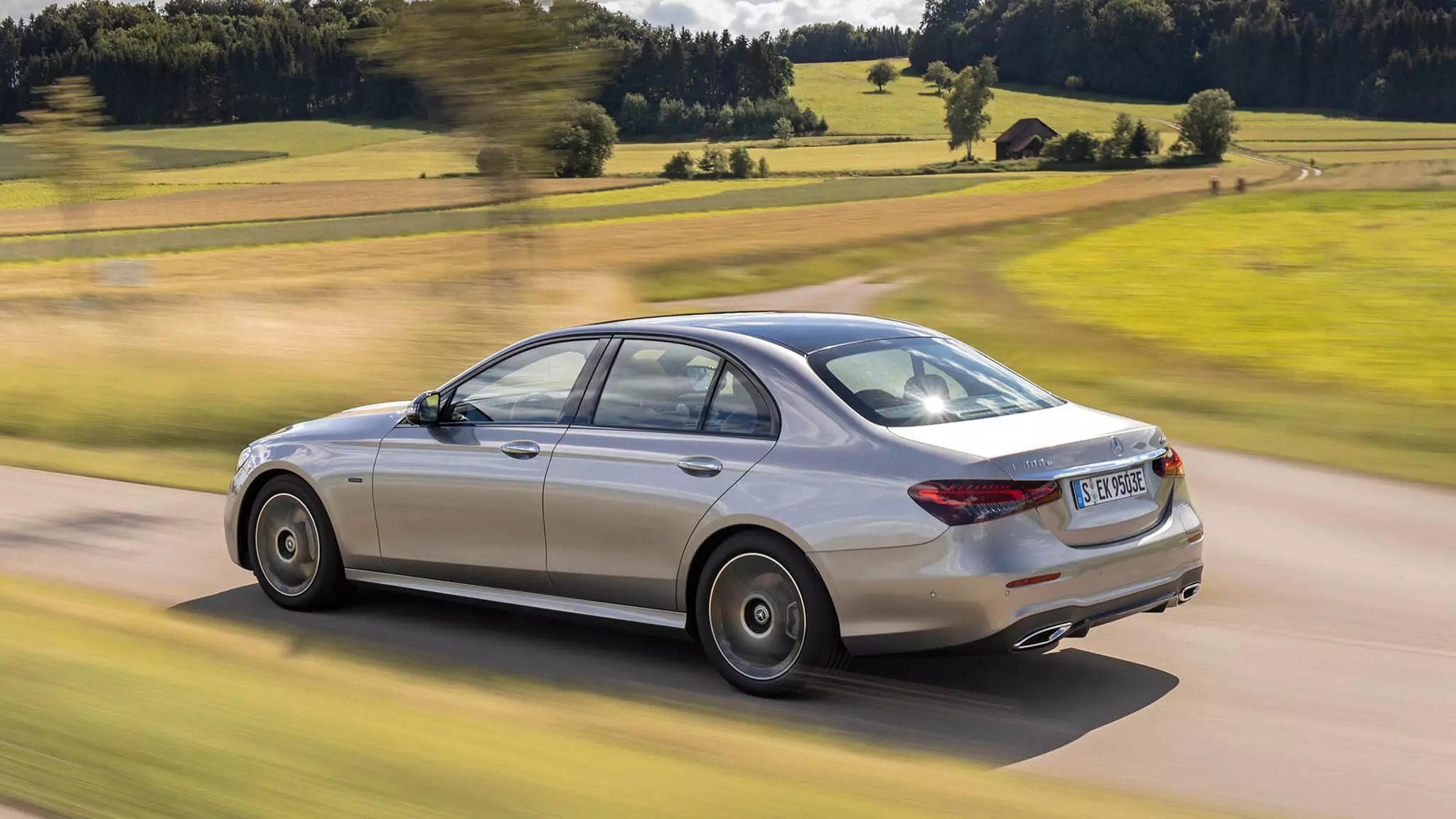
Note: The images are not those of the and 300 of , but from the and 300 and , that is, the plug-in gasoline hybrid — both share the same battery and electric machine. These were the only images available of the hybrid saloon variant. Of and 300 of only images of the Station (van) were available.
Electric autonomy? Everything is the same
Nevertheless, by keeping the same system presented at the end of 2018, the half-hundred kilometers of electric autonomy of the plug-in Diesel hybrid of the renewed E-Class (which will have seven PHEV variants in the different bodies, including the novelty of 4×4 versions ) falls short of the smaller Mercedes-Benz gasoline plug-in vehicles — 57 to 68 km (which also have a larger battery) — and also (albeit barely) of direct competition — BMW 5 Series, Volvo S90 and Audi A6 — also gasoline.It may be psychological, but we are used to the Diesel's autonomy being more extended… although here it has nothing to do with the combustion engine.
And very far from the GLE 350 of which recently received the largest plug-in-mounted battery on the market (31.2 kWh, almost the size of a small 100% electric car battery) to reach 100 km of autonomy.
Of course, if it is true that the E-Class had adopted this energy accumulator, its autonomy would more than double compared to that of the and 300 of offers, it is also no less that the trunk would be transformed into little more than a glove compartment…
The on-board charger has a capacity of 7.4 kWh, which is essential for charging (total) in alternating current (AC) between five hours (outlet) and 1.5 hours (with wallbox).
Exterior design changes a lot
Before starting a tour of the city of Madrid and surroundings, let's see the differences in this model, which, with 14 million units registered since the launch of the original version in 1946, is the best-selling model in the history of Mercedes-Benz.
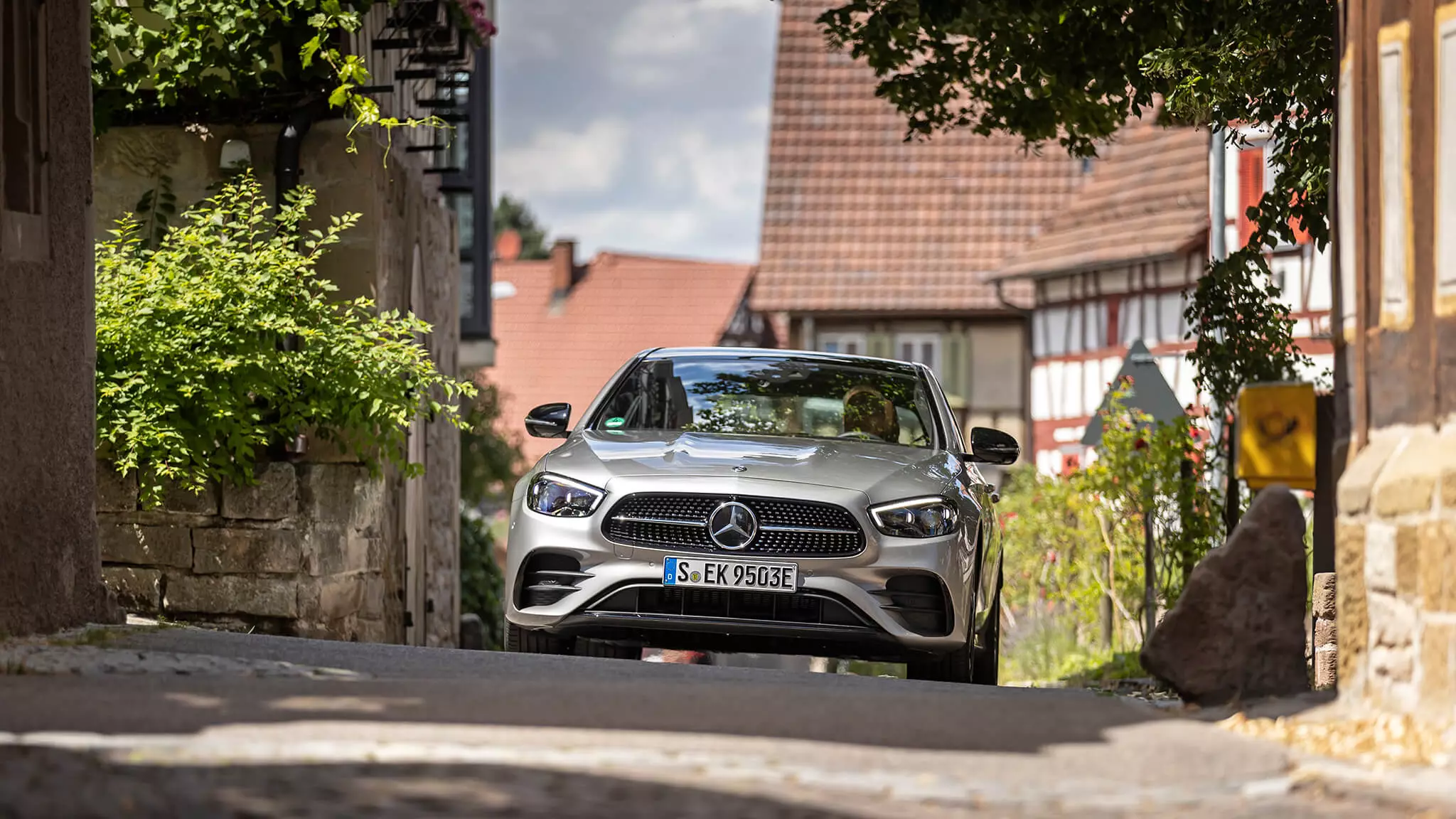
Taking advantage of the fact that it even had to change more than usual the front and rear sections — because the arsenal of equipment in the driver assistance systems was greatly enhanced and received specific hardware that was installed in these areas — Mercedes used the opportunity to “ tinkering” more with the design than is traditional in these mid-life facelifts.
Hood (with “power” bosses on Avantgarde, AMG Line and All-Terrain) and trunk lid with new lines, and completely redesigned optics at the front (full LED as standard and multibeam system as an option) and at the rear, where the headlights now having two pieces and being much more horizontal, entering through the trunk lid, these are the elements that easily differentiate it from its predecessor.
The chassis changes come down to tuning the air suspension (when fitted) and reducing the Avantgarde version's ground clearance by 15mm. The objective of reducing the height to the ground was to improve the aerodynamic coefficient and, therefore, contribute to a reduction in consumption.
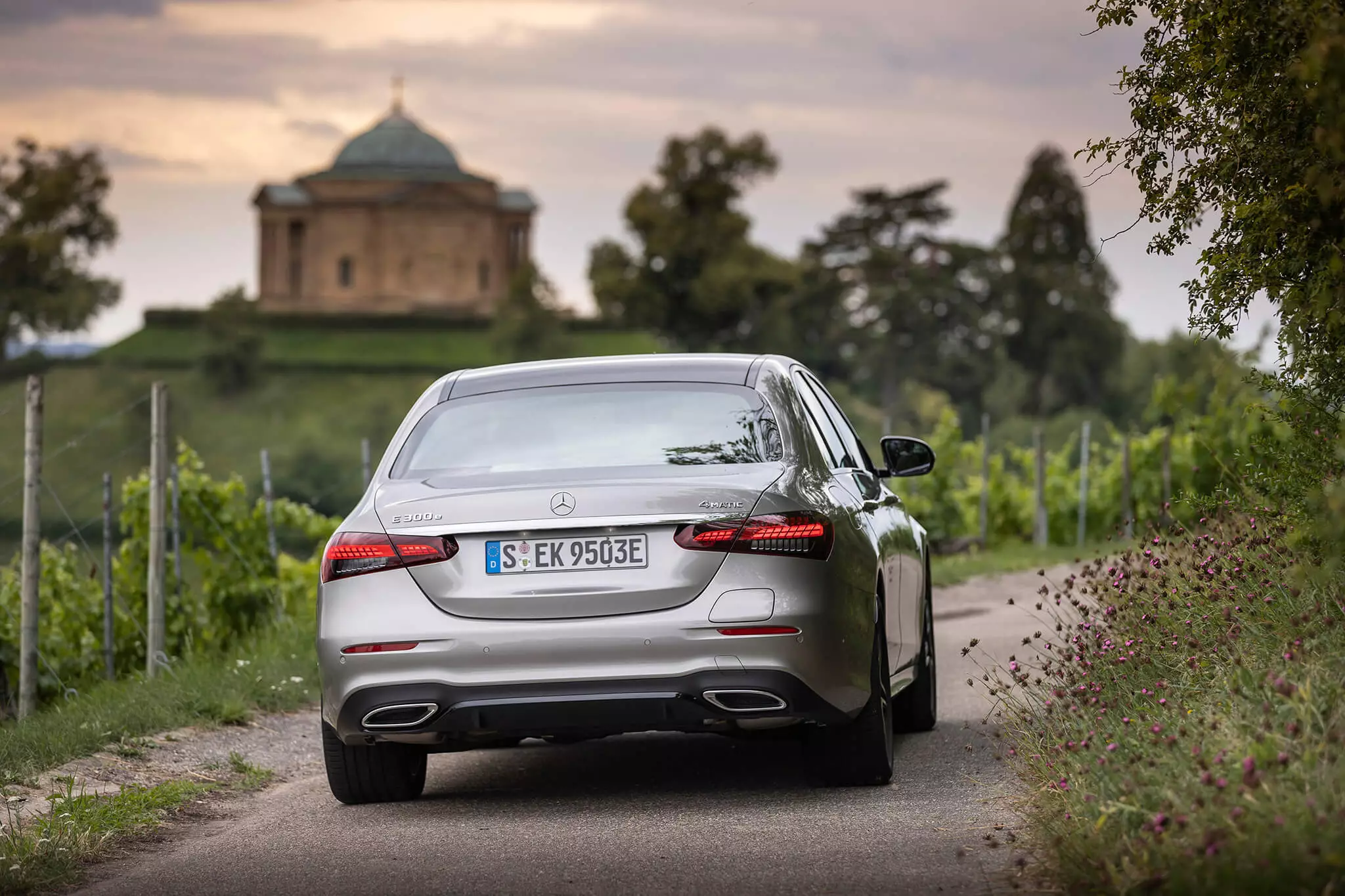
The Avantgarde version becomes the entry version. Until now there was a base version (no name) and Avantgarde was the second level. Which means that, for the first time in accessing the E-Class range, the star drops from the top of the hood to the center of the radiator grille, which has more chrome and black lacquered bars).
Subscribe to our newsletter
The strengthening of the driving assistance systems meant that the driver now has cruise control based on real-time information on the journey itself (taking into account accidents or traffic jams ahead), active blind spot assistant, side view function in the support for parking and an evolution in the parking system that now integrates the images collected by the camera and the ultrasonic sensors so that the entire surrounding area is scrutinized (until now only sensors were used), with the consequent gains in speed and accuracy .
New steering wheel and little more inside
In the cabin there are fewer changes. The dashboard was kept (but the two 10.25” digital screens are standard, while as an extra two 12.3” can be specified), with new colors and wood applications, while the control system MBUX now integrates voice control and augmented reality (a video image of the surrounding area with superimposed arrows or numbers is projected in the navigation).
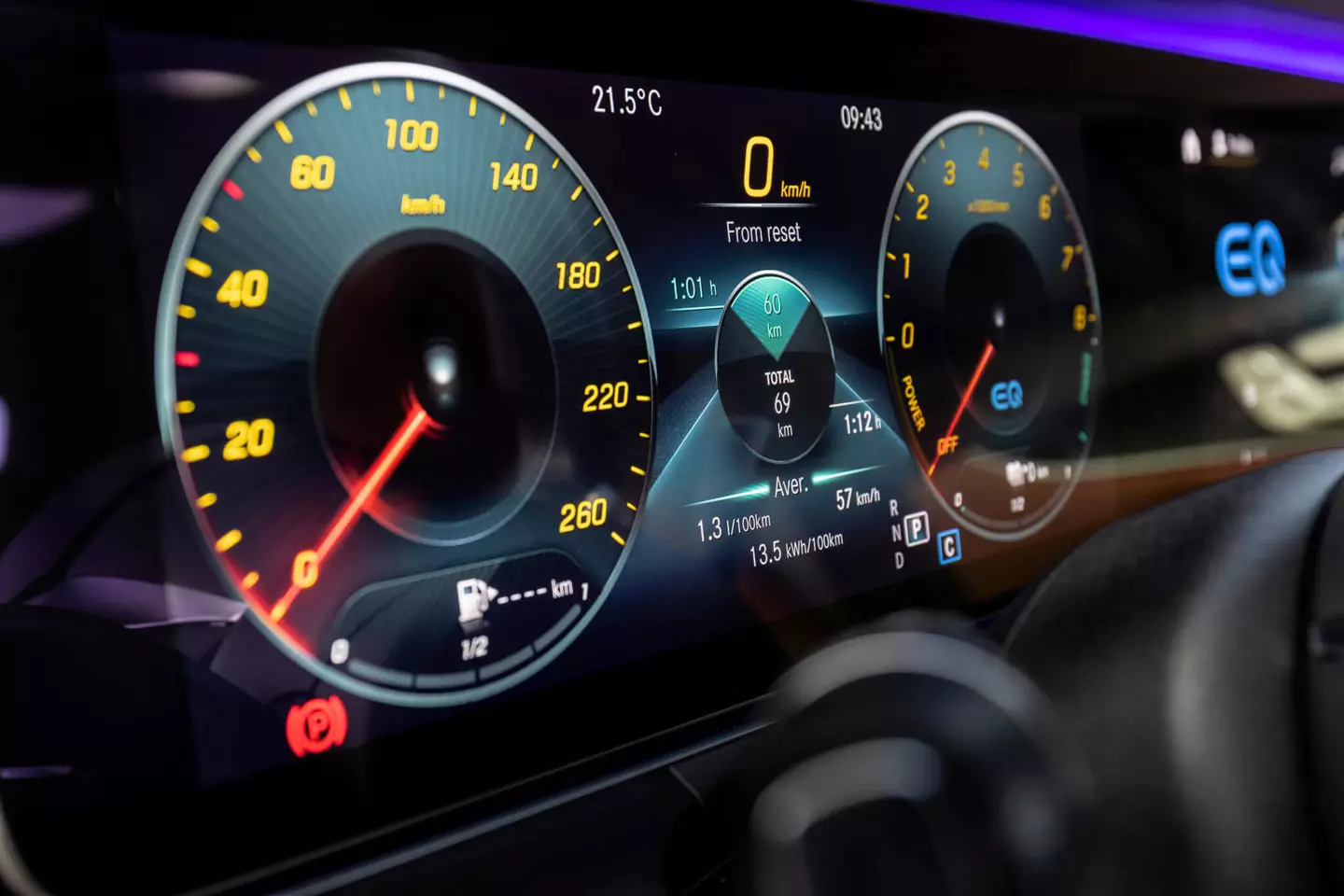
In addition to various possibilities for individual customization, there are four types of predefined general presentation for the instrument panel: Modern Classic, Sport, Progressive and Discreet (reduced information).
The main novelty turns out to be the steering wheel , with a smaller diameter and a thicker rim (ie sportier), either in the standard version or in the AMG (both have the same diameter). It has a more extensive tactile surface (which integrates several controls) and is capacitive, which means, for example, that the driving assistance always has the information that the driver's hands are holding it, eliminating slight movements with the rim so that the software realizes that the driver has not let go (as happens in many models on the market today).
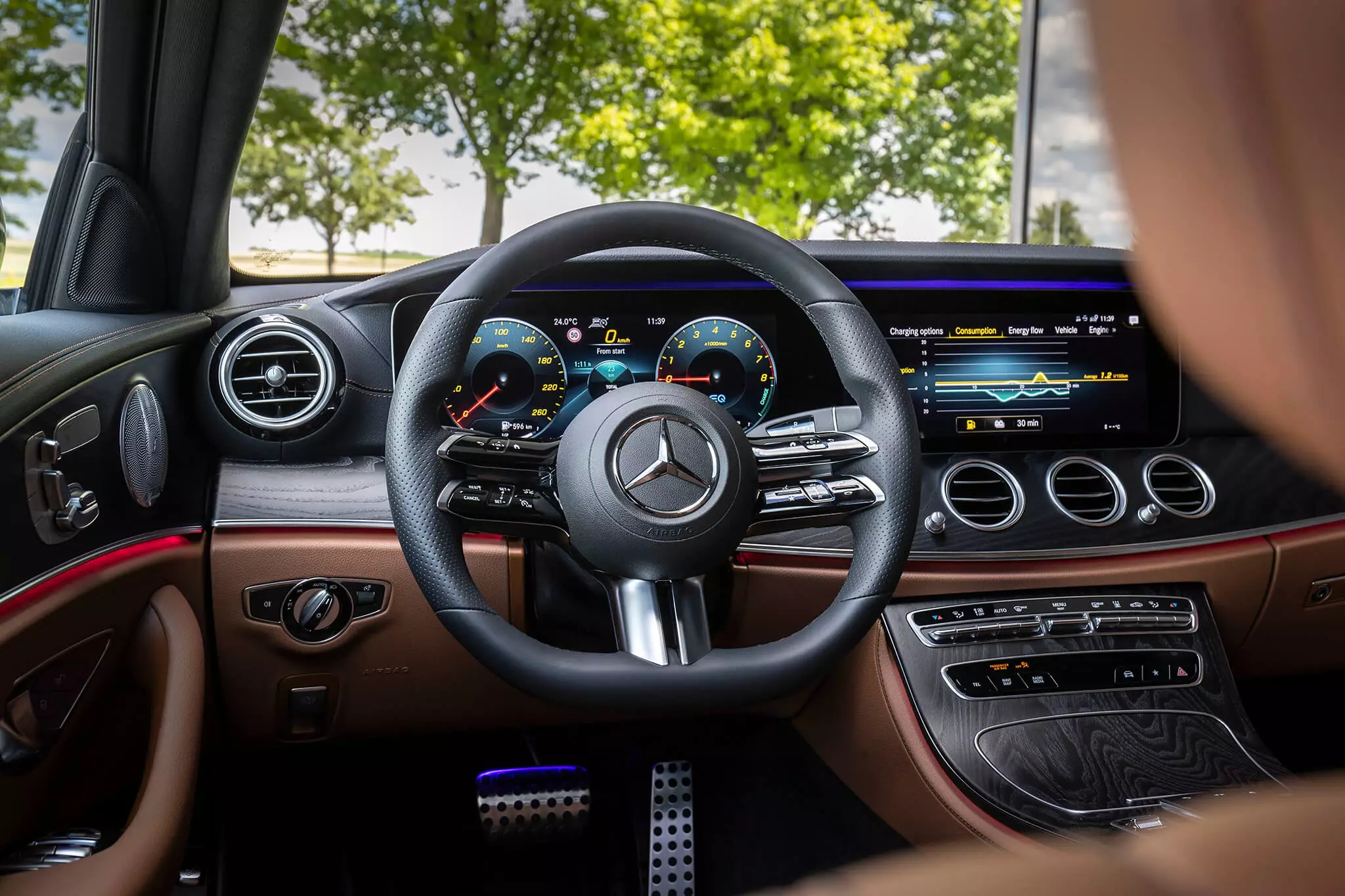
Even aware that it's one thing to use a car for a few hours and another to have this vehicle as the main thing day after day, there is the feeling that users will have to spend a lot of time studying the multiple possibilities for customization and information on the two screens, so that it is possible to have faster access to the most valued data and to avoid excessive distraction when handling the various menus.
The other innovation in this area is the existence of a wireless charging base for smartphones, which is a constant in every new car that hits the market.
Suitcase “shrinks” in plug-in hybrid
Space is not lacking, both in length and in height, and the central rear passenger must be warned that they are traveling with a massive tunnel between their feet. The amphitheater effect allowed by the rear seats higher than the fronts and the direct ventilation outlets for this second row, both in the center and in the central pillars, is pleasing.
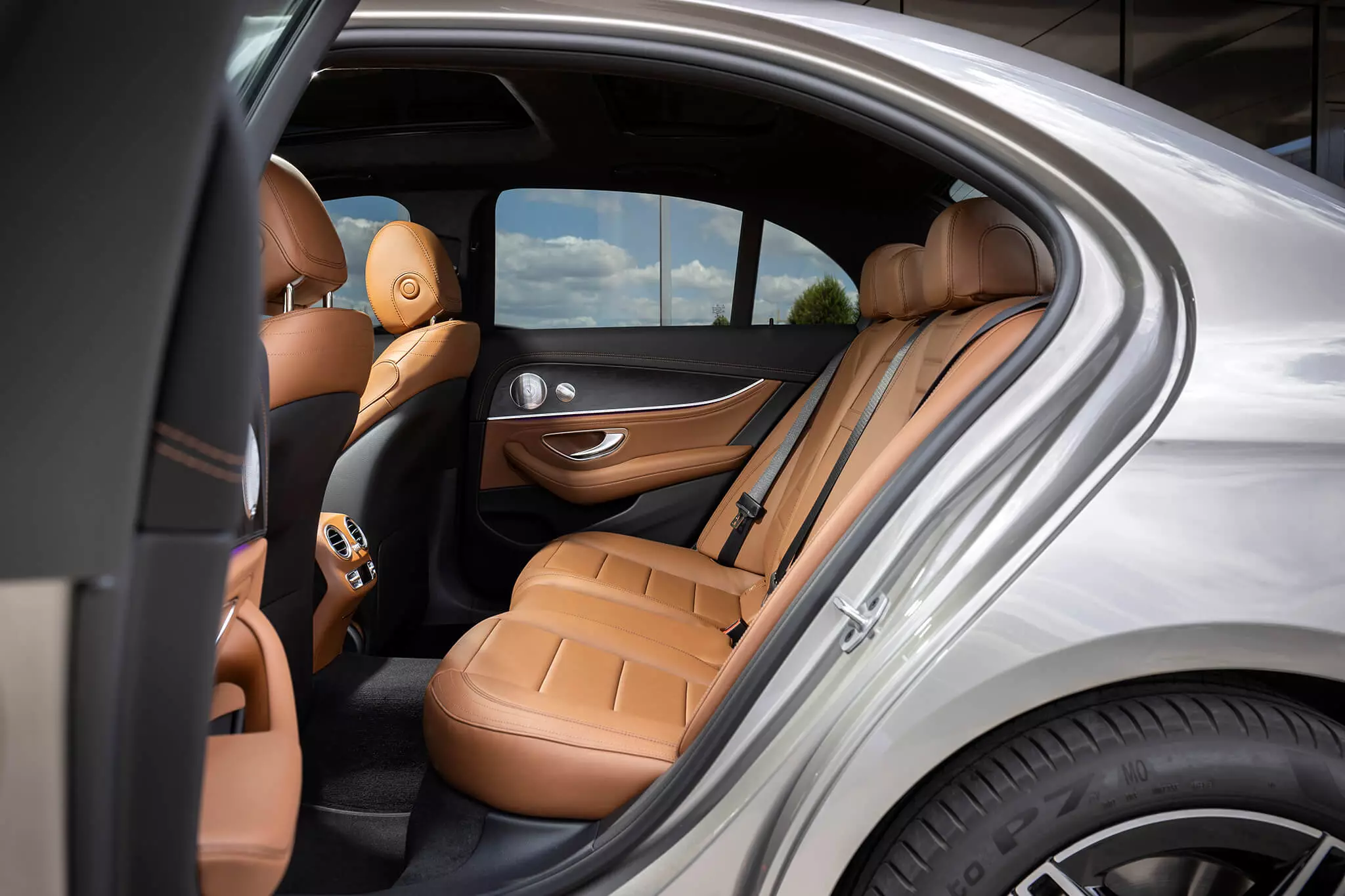
The most negative part in the evaluation of this model has to do with the luggage compartment, as the battery is located behind the rear seats and continues to take away too much space: the 540 l luggage volume of an E-Class “non-plug hybrid” -in" shrink to 370 l in the and 300 of , and a kind of wide “ingot” appears on the floor near the backs of the seats.
It is also an obstacle when you want to fold down the backs of the seats and generate a completely flat load space, which is not possible here (this also happens in the van, which still loses more capacity when going from 640 to 480 l).
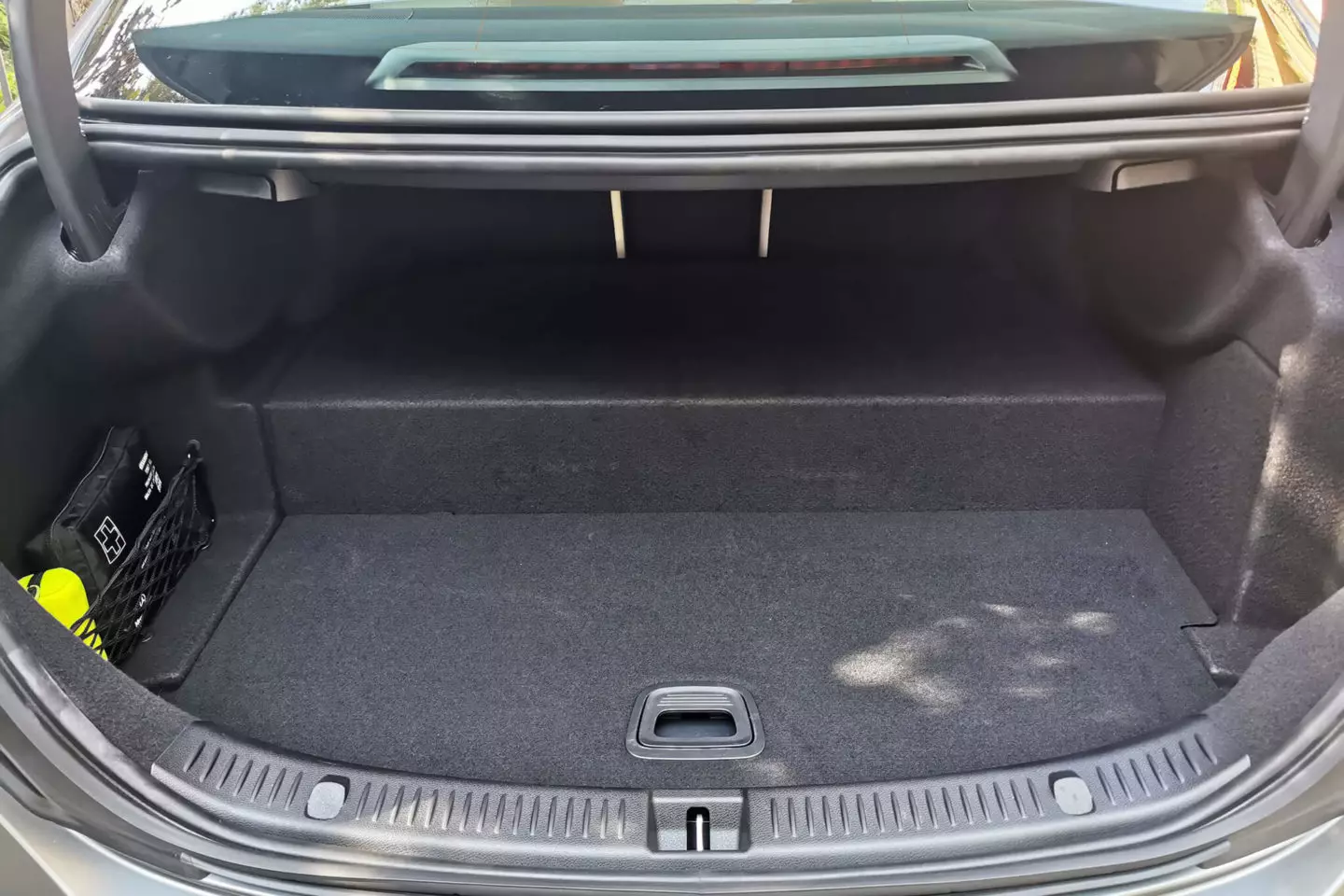
As can be seen, the trunk of the E-Class plug-in hybrids is reduced due to the battery it needs. Compares to the non-hybrid E-Class in the image opposite…
This issue of reducing the volume and functionality of luggage compartments is common to all plug-in hybrids compared to non-hybrid versions (Audi A6 goes from 520 l to 360 l, BMW 5 Series from 530 l to 410 l, Volkswagen Passat from 586 l l to 402 l) and only SUVs can limit the damage (because there's more height space on the car platform) or the latest platforms already developed from the factory with the plug-in version in mind, as in the case of the Volvo S90 ( which advertises the same 500 liters in hybrid and “normal” versions).
This Diesel plug-in hybrid system from and 300 of it then arrived on the market in 2019 in “counter-current”, but its acceptance is showing that the bet was correct.
In Portugal, more than half of the E-Class range sales last year were of this version and 300 of , while the plugin gasoline weighed no more than 1% of the “cake”.
The sophisticated and highly spared 2.0 l Diesel engine (194 hp and 400 Nm) joins efforts with the electric motor to achieve, in a combined way, 306 hp and 700 Nm , with the “eco” record being more impressive — 1.4 l/100 km of average consumption — than the 50-53 km of electric range.
It is linked to the nine-speed automatic transmission known in the Mercedes range, here with a hybrid drive head with integrated converter, a separation clutch and an electric motor. Despite the additional elements, it remains quite compact, not exceeding the size of the conventional application by more than 10.8 cm.
In turn, the electric motor (made in partnership with Bosch) has an output of 122 hp and 440 Nm, being able to assist the diesel engine or move the and 300 of solo, in this case at speeds of up to 130 km/h.
Convincing services and consumptions
With this performance worthy of a sports car, the and 300 of it fully convinces by the instantaneous way it responds to any acceleration, courtesy of that same very high torque and instantaneous electrical thrust, as always. The benefits are worthy of a GTI: 5.9 s from 0 to 100 km/h, 250 km/h and recoveries at the same level…
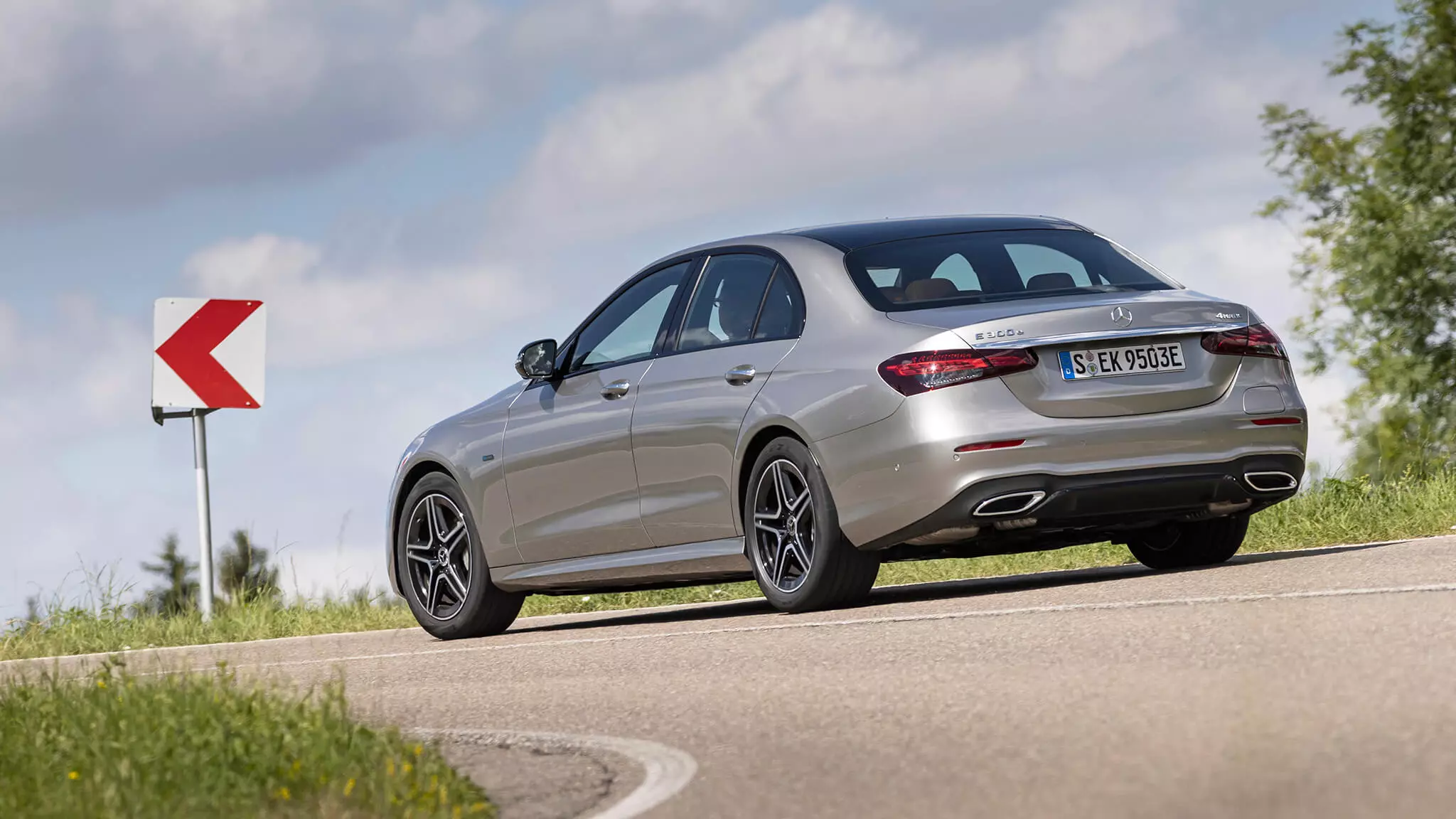
The suspension feels a little drier, due to the battery's weight (which is also noticeable when cornering) and the suspension marginally lowered, but without harming the ride comfort, especially in Comfort mode — the others are Economy, Sport and Sport Plus, and then there are four other management programs for the hybrid system (Hybrid, E-Mode, E-Save and Individual).
The good feelings were transmitted by the very direct steering (2.3 laps from top to top and now with such a smaller interface) while the braking proved to be sufficient for all occasions and, perhaps more relevant, with smooth transitions between hydraulic and regenerative operation.
The smoothness of the gearbox and the changes between the different modes (mainly when turning the four-cylinder Diesel on and off) made me convinced about the state of maturity that the German brand has reached in its third generation of hybrids.
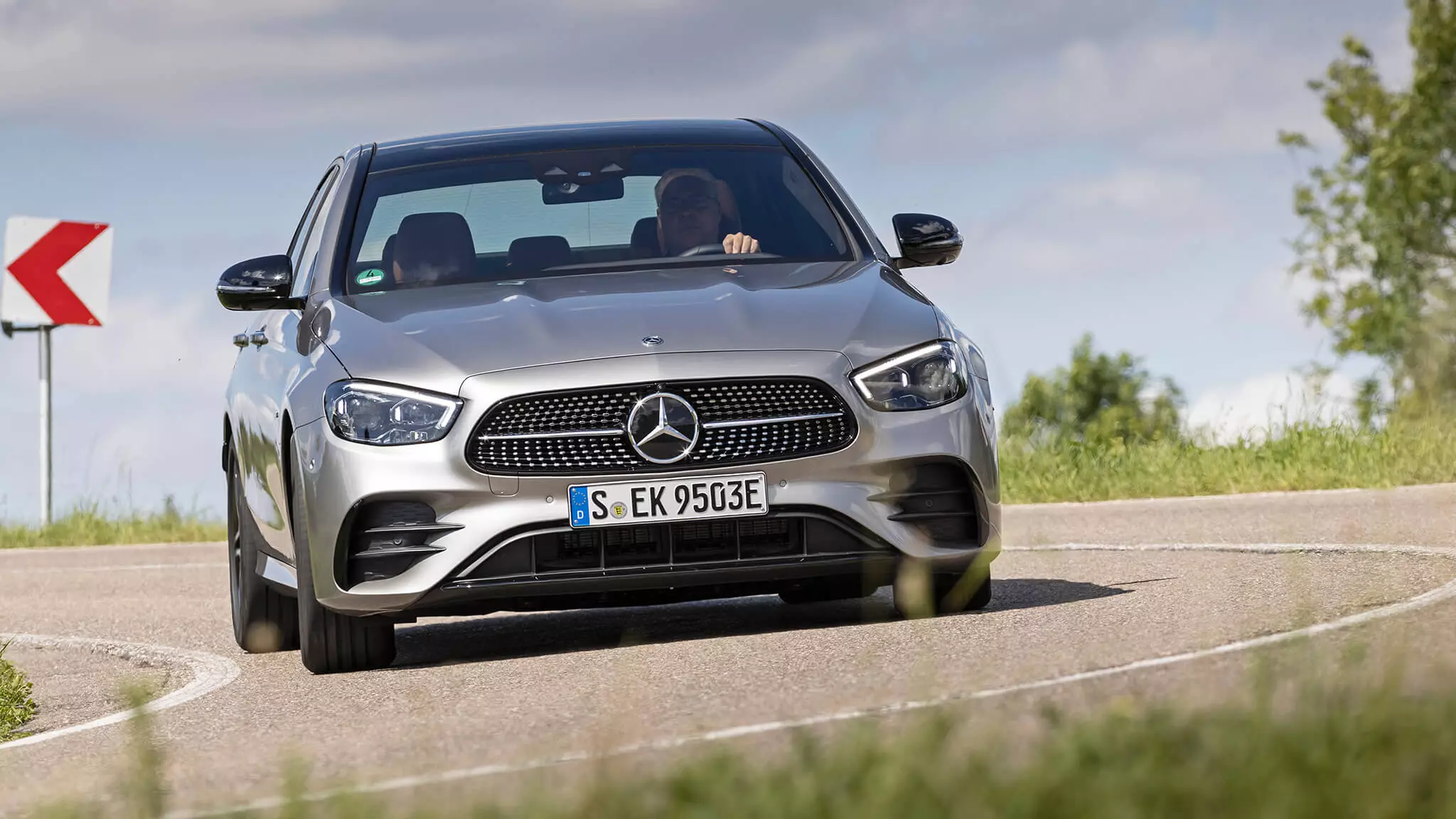
In addition to the kilometers of 100% electric driving (which will allow many users to always drive “battery-powered” throughout the week, with the resulting lower energy costs, as well as outstanding silence/smoothness of operation), the and 300 of it's always smoother to drive than any non-hybrid Diesel, because the help of electric propulsion relieves the diesel engine from much of the effort that would make it noisier if it worked “on the ground”.
E 300's: the most popular version of the E-Class
The 96 km of driving experience — on a mixed route between the city and a bit of highway on the outskirts of the Spanish capital — were covered with a consumption of 3.5 l/100 km (much more than the electric autonomy, therefore), being able to this average is much lower or much higher, depending on whether or not you use the battery charge judiciously (recharging it whenever necessary and using the most suitable driving programs for each situation).
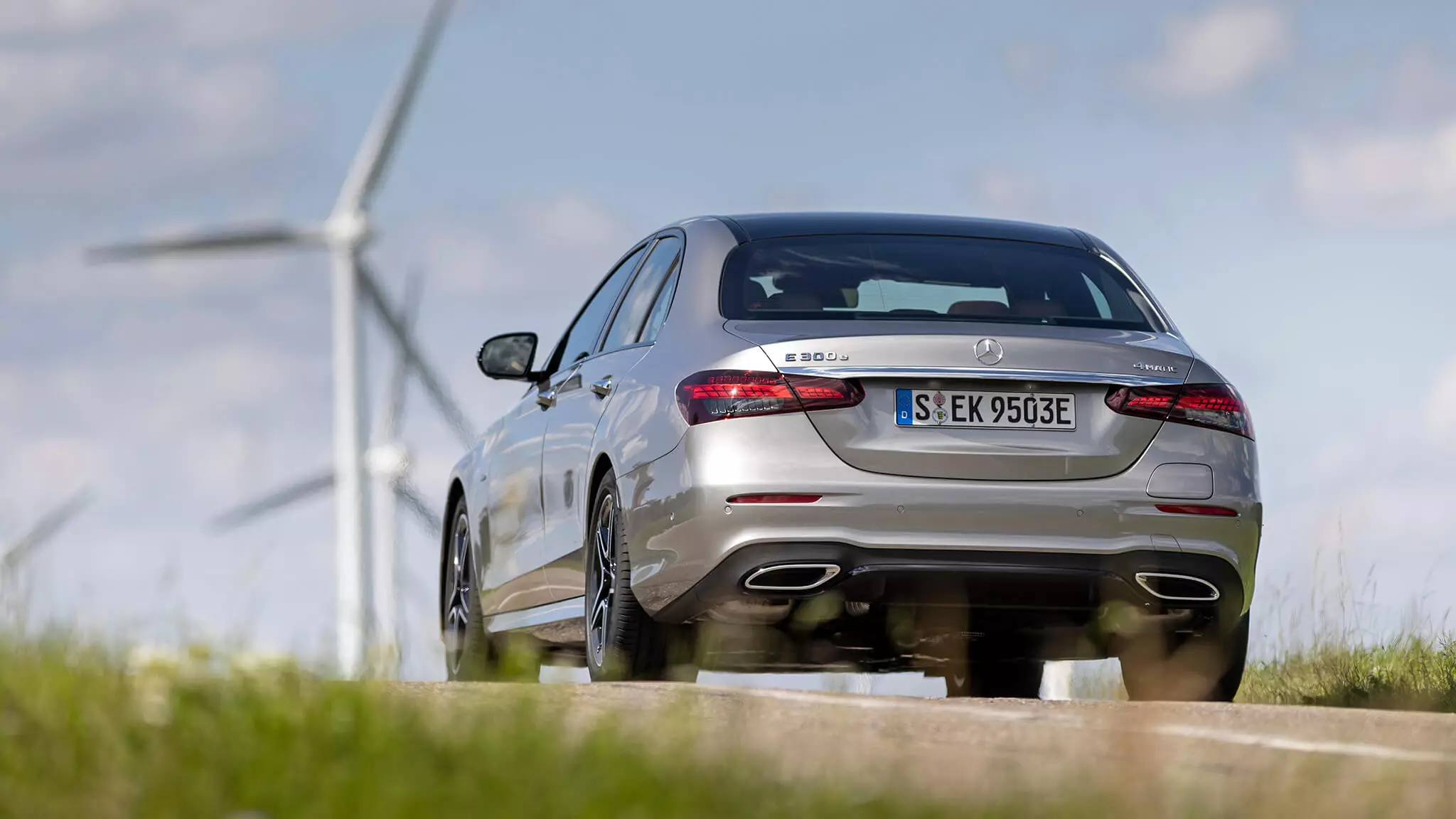
If the intention is to be especially efficient, it is possible to run with the engine off more than 90% of the time. And even if that is not the case, it is difficult to find a car with these dimensions/weight/power (almost five meters long, more than two tons and 306 hp) with such low consumption.
That's why even though it costs €9000 more than the E 220 d, more than half of customers prefer this Diesel plug-in.
When does it arrive and how much does it cost?
The renewed Mercedes-Benz E-Class already has prices for Portugal and arrives at us in September. the price of this and 300 of starts at 69,550 euros.
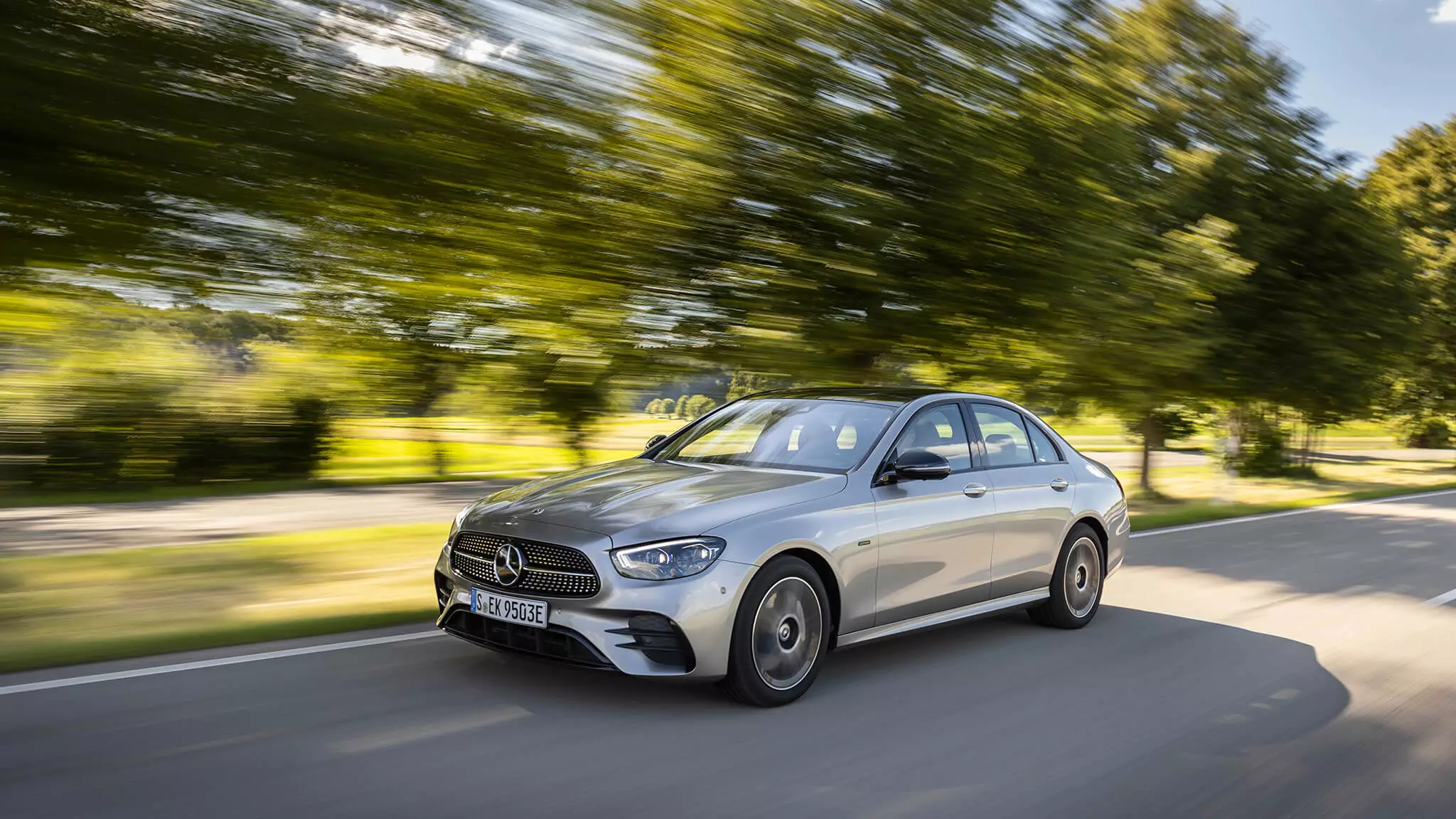
Technical specifications
| Mercedes-Benz E 300 of | |
|---|---|
| combustion engine | |
| Position | Front, Longitudinal |
| Architecture | 4 cylinders in line |
| Distribution | 2 ac/c./16 valves |
| Food | Injury Direct, Common Rail, Variable Geometry Turbo, Intercooler |
| Capacity | 1950 cm3 |
| power | 194 hp at 3800 rpm |
| Binary | 400 Nm between 1600-2800 rpm |
| electric motor | |
| power | 122 hp |
| Binary | 440 Nm at 2500 rpm |
| Combined values | |
| Maximum power | 306 hp |
| maximum torque | 700 Nm |
| Drums | |
| Type | lithium ions |
| Capacity | 13.5 kWh (9.3 kWh net) |
| Loading | 2.3 kW (5 hours); 3.7 kW (2.75 hours); 7.4 kW (1.5 hours) |
| Streaming | |
| Traction | back |
| Gear box | 9 speed automatic gearbox (torque converter) |
| Chassis | |
| Suspension | FR: Independent — multi-arm (4); TR: Independent — multi-arm (5) |
| brakes | FR: Ventilated discs; TR: Ventilated Discs |
| Direction | electrical assistance |
| turning diameter | 11.6 m |
| Dimensions and Capabilities | |
| Comp. x Width x Alt. | 4935mm x 1852mm x 1481mm |
| Length between the axis | 2939 mm |
| suitcase capacity | 370 l |
| warehouse capacity | 72 l |
| Wheels | FR: 245/45 R18; TR: 275/40 R18 |
| Weight | 2060 kg |
| Provisions and consumption | |
| Maximum speed | 250 km/h; 130 km/h in electric mode |
| 0-100 km/h | 5.9s |
| Combined consumption | 1.4 l/100 km |
| Electric combined consumption | 15.5 kWh |
| CO2 emissions | 38 g/km |
| electrical autonomy | 50-53 km |
